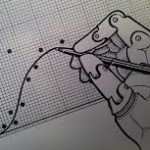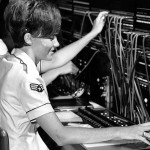Mathematics of an updated, plural Economics
Having similar applications, users, and backgound, at a distance Machine Learning may sometimes be confused with an application of Statistics.
A closer look reveal fundamental differences, as in “Why a Mathematician, Statistician, & Machine Learner Solve the Same Problem Differently” by Nir Kaldero.
One scientific field this difference comes to surface in a distinguished manner is economics, as Noah Smith’s “Economics Has a Math Problem” sensibly puts the emphasis on the way economics uses math.
Pushing science to new fields, scientists can now employ much more data and computational power than the time when a significant part of mainstream economics was developed. If econometric tools set the tone for neoclassic economic papers in the final decades of last century, could machine learning, Bayesian inference, and neural networks open new possibilities to economic theory?
One arguable example is “Mechanisms for Multi-unit Combinatorial Auctions with a Few Distinct Goods” by Piotr Krysta, Orestis Telelis, Carmine Ventre. Not a coincidence, researchers are not from Economics departments. Even if economists are stubborn enough to dismiss game theory as a non-fundamental field, message is clear: if economists don’t embrace new math, other scientists (human or not) could engulf economics less cerimoniously.
If this happens, will we find that Keynesian uncertainty and weight of arguments fits big data better than deterministic parameters of neoclassic mainstream?
Experimenting a proxy to Earth before life – in a toaster
From Nautilus, by Johnny Bontemps, The Dawn of Life in a $5 Toaster Oven:
“… A vintage General Electric model… for cooking up the chemical precursors of life, he thought. He bought it for $5.
At home in his basement, with the help of his college-age son, he cut a rectangular hole in the oven’s backside, through which an automated sliding table (recycled from an old document scanner) could move a tray of experiments in and out. He then attached a syringe pump to some inkjet printer parts, and rigged the system to periodically drip water onto the tray … in Hud’s laboratory at the Georgia Institute of Technology, where he directs the Center for Chemical Evolution, a multi-university consortium funded by NASA and the National Science Foundation. …
It simulates the cycles of cool and hot, and wet and dry, that Hud suspects jump-started this evolutionary process, millions of years before the first cellular life forms emerged…
Evolution requires two forces: variation and selection… Polymers can form, break down, and form again with new configurations. That’s variation. … They might fold into shapes that prevent them from breaking apart too quickly, for instance. That’s selection. …
The engine for life and evolution could then be, as Hud says, as simple as “a planet spinning in front of a star…” read full story
Bias dynamics in A.I.
The more algos we live by, the more “Computer Scientists Find Bias in Algorithms” as the story by Lauren J. Young tells us.
We may, of course, think that bias is unavoidable, so the best we can do is be aware and go on. How much aware may find some psychological or commercial barriers, as in Jerry Kaplan’s “Would You Buy a Car That’s Programmed to Kill You? You Just Might.”
Maybe we can only hope that something good may come from algos interacting and trying to learn what are their new preferred actions (from their adjusted biases) as Daniel Hennes and Michael Kaisers paper on “Evolutionary Dynamics of Multi-Agent Learning” indicates its possible.
‘Stop the whining!’ – said the robot
One doesn’t have to wait long until a new story comes up showing how humans are already obsolete. Robots are taking our jobs and there’s no scape from it.
Recent examples can be found in Will Knight’s two recent articles at MIT Tech review “New Boss on Construction Sites Is a Drone” and “Robots Learn to Make Pancakes from WikiHow Articles“.
Less often we find stories such as “Technology has created more jobs than it has destroyed, says 140 years of data” and suddenly we feel lighter. Technology will provide us new jobs. Of course this is not played well for typists, lamplighter, ice cutters, etc, but at least there’s hope.
Richard Newton’s “Visions of a future beyond abundance and lolling” tries a calmer, optimistic if not skeptical approach.Continue reading→
Ashley Madison hack, marriage and technology
Links via Azeem Azhar’s great Exponential View:
As people discuss Ashley Madison’s hack repercussions, this interview with the hackers is informative.
Moving to how people see traditional marriage going forward survey of futurists overwhelmingly supported plural marriages.
And then we are back to old theme of repressing women and their insolent attempt to do what they think they want as the last two hundred years have been filled with moral panics about women using technologies for libertine ends.
the world. live from ISS soon streaming HD video
Westminster
Boston
What part of ‘Stop!’ means ‘Stop!’ can’t someone get?
Making herself yet more exposed Emma Sulkowicz bravely publishes this video and in an effort to bring attention to rape and how this is tacitly approved by ‘modern’ society.
By posting the video she is now exposed to agression by virtual – as if very real and phisical were not enough – means of hatred.
As to many women guilty of thinking – and speaking up – for themselves this is bound to trigger tons of cynicism.
Legitimate questioning whether this is best form to push debate about rape in society may rise as well, and in this case it is possible that part of what appears to be Emma’s goal – bring attention to the cause – is achieved.






